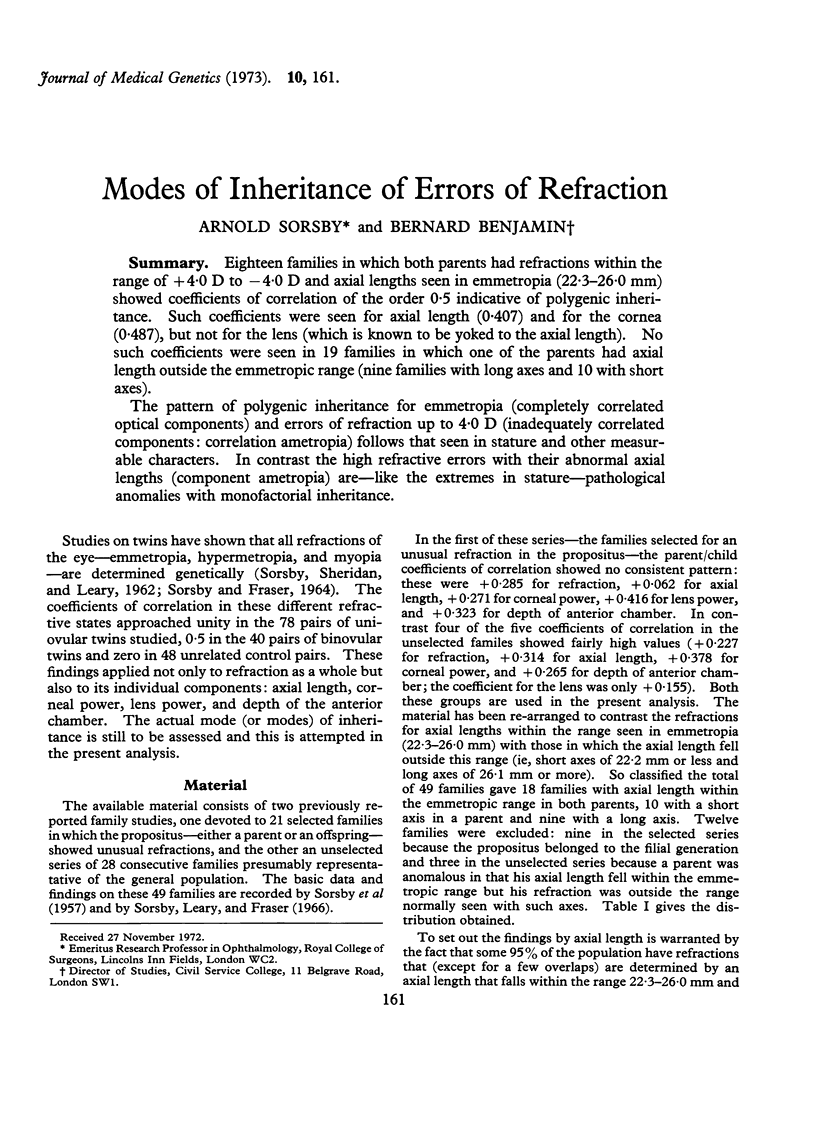Abstract
Eighteen families in which both parents had refractions within the range of +4·0 D to −4·0 D and axial lengths seen in emmetropia (22·3-26·0 mm) showed coefficients of correlation of the order 0·5 indicative of polygenic inheritance. Such coefficients were seen for axial length (0·407) and for the cornea (0·487), but not for the lens (which is known to be yoked to the axial length). No such coefficients were seen in 19 families in which one of the parents had axial length outside the emmetropic range (nine families with long axes and 10 with short axes).
The pattern of polygenic inheritance for emmetropia (completely correlated optical components) and errors of refraction up to 4·0 D (inadequately correlated components: correlation ametropia) follows that seen in stature and other measurable characters. In contrast the high refractive errors with their abnormal axial lengths (component ametropia) are—like the extremes in stature—pathological anomalies with monofactorial inheritance.
Full text
PDF



Selected References
These references are in PubMed. This may not be the complete list of references from this article.
- SORSBY A., FRASER G. R. STATISTICAL NOTE ON THE COMPONENTS OF OCULAR REFRACTION IN TWINS. J Med Genet. 1964 Sep;1(1):47–49. doi: 10.1136/jmg.1.1.47. [DOI] [PMC free article] [PubMed] [Google Scholar]
- SORSBY A., SHERIDAN M., LEARY G. A., BENJAMIN B. Vision, visual acuity, and ocular refraction of young men: findings in a sample of 1,033 subjects. Br Med J. 1960 May 7;1(5183):1394–1398. doi: 10.1136/bmj.1.5183.1394. [DOI] [PMC free article] [PubMed] [Google Scholar]
- Sorsby A., Leary G. A., Fraser G. R. Family studies on ocular refraction and its components. J Med Genet. 1966 Dec;3(4):269–273. doi: 10.1136/jmg.3.4.269. [DOI] [PMC free article] [PubMed] [Google Scholar]


